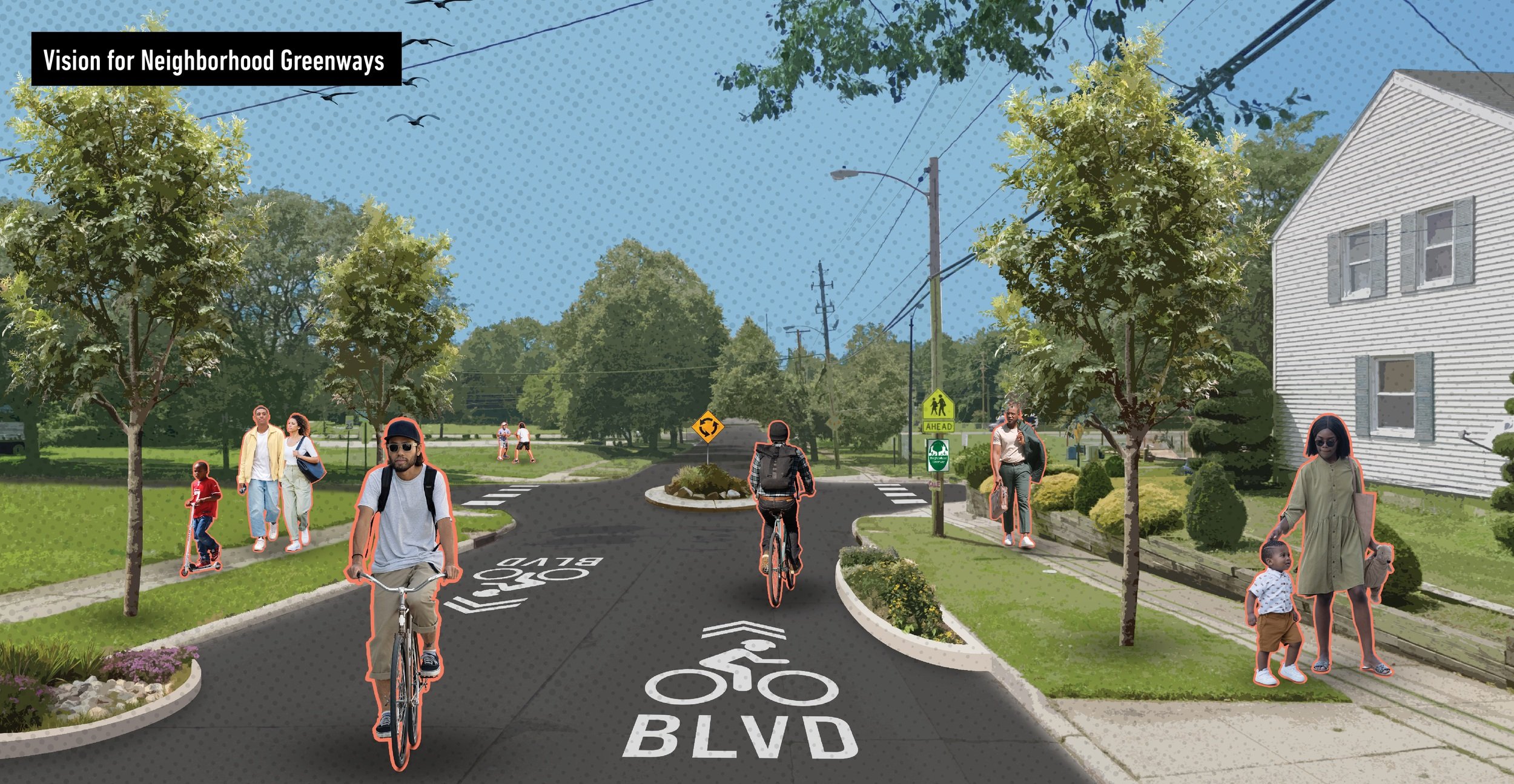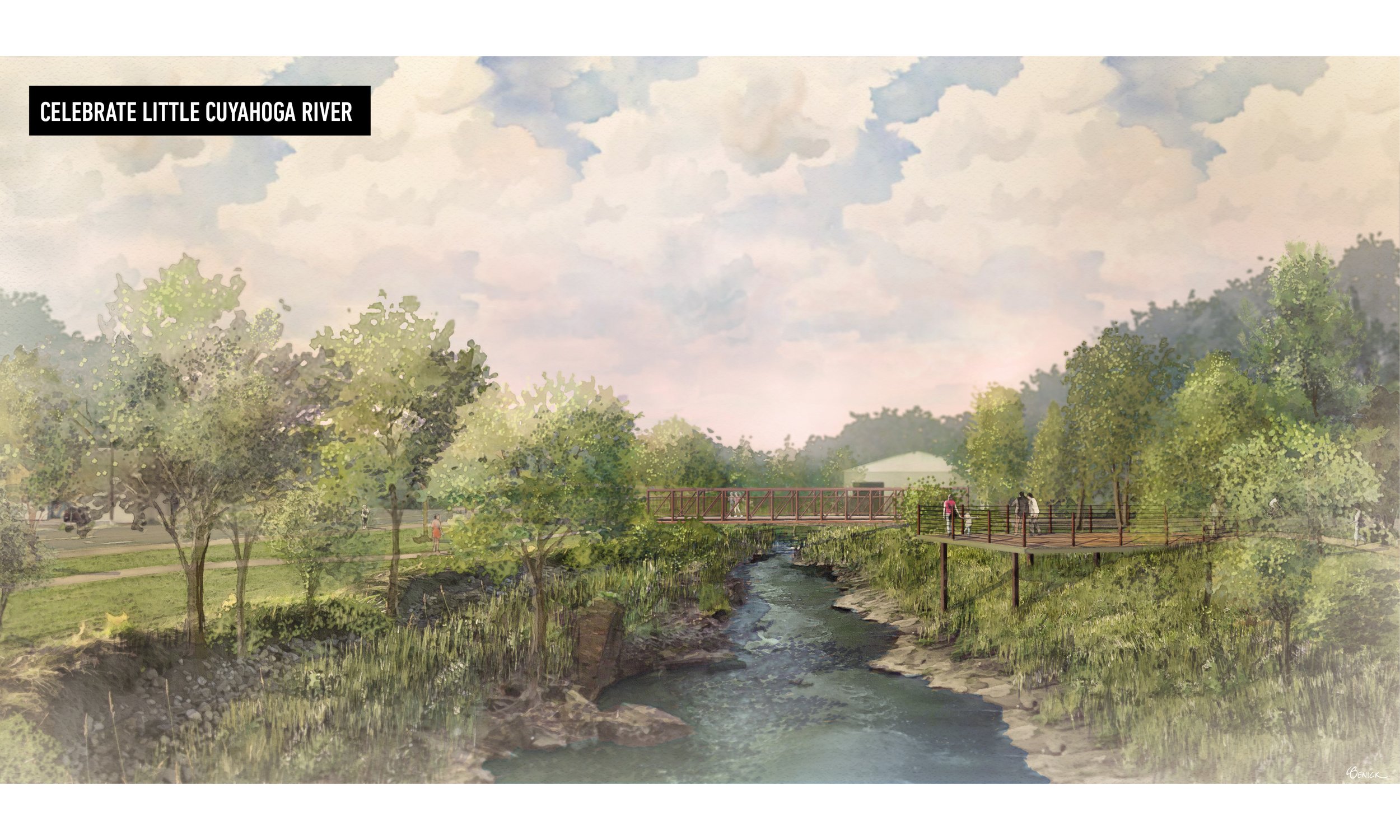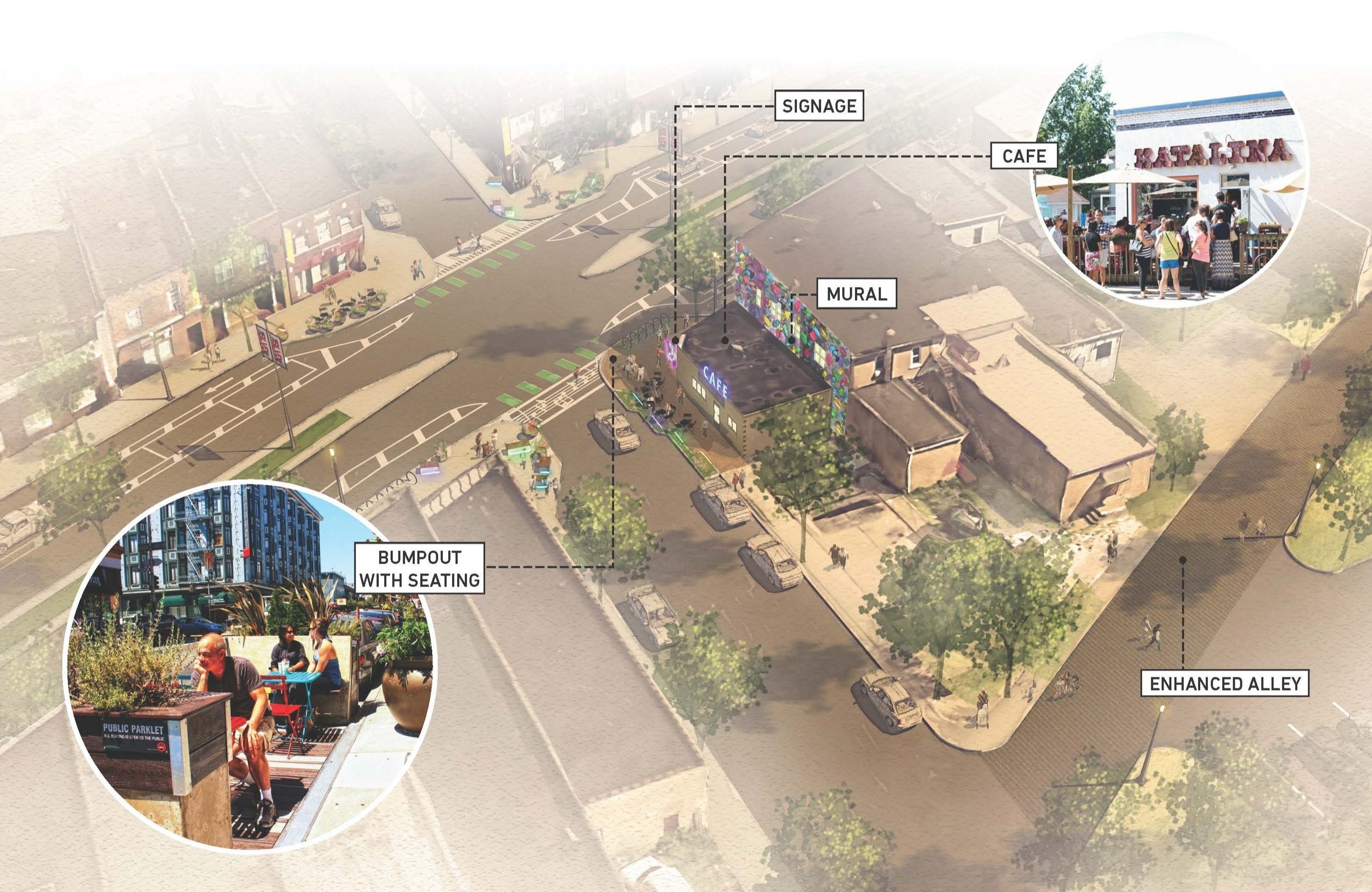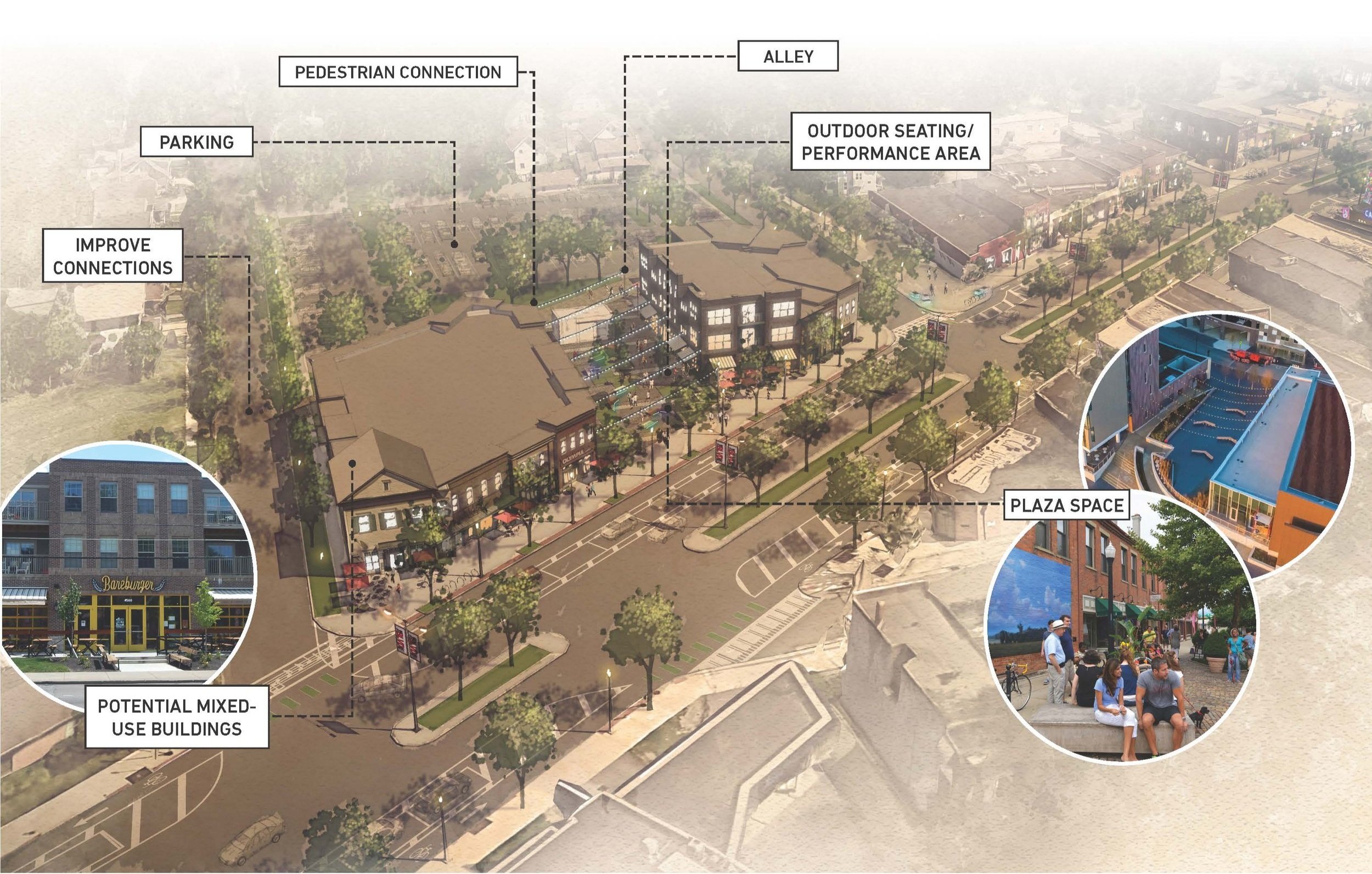
Akron Neighborhood Plans Akron, Ohio
Services Provided
Community Planning
Placemaking Design
Public Engagement
People Involved
Andrew Overbeck
Sarah Lilly
Plan Documents
Establishing resident-led visions for four neighborhoods and their business districts to spur positive change.
MKSK worked with several local community nonprofits and development corporations (Kenmore Neighborhood Alliance, Summit County Habitat for Humanity, Progressive Alliance CDC, The Well) and in collaboration with the City of Akron Planning and Urban Development Department. MKSK took a comprehensive look at the state of the neighborhoods of Kenmore, Middlebury, University Park, and West Akron and developed strategic recommendations for neighborhood enhancement and improvements.
MKSK creatively engaged a cross-section of the community through unique community events, a Jane’s Walk, public workshops, among other means of engagement.
The neighborhood plans combine collaborative community input with detailed analysis of existing conditions to create a planning framework for physical improvements, catalytic projects, and policy changes.
WEST AKRON NEIGHBORHOOD PLAN
Under the guidance of the Progressive Alliance Community Development Corporation and the City of Akron, MKSK led a neighborhood planning process with regular input from a Steering Committee and community members. Planning for the 6.7 square mile study area included a comprehensive understanding of the neighborhood today, including in depth market analysis findings, that informed strategic recommendations for the revitalization and improvement of the neighborhood. Community outreach and engagement occurred alongside every stage of the planning process and included input from various groups, including a Steering Committee, stakeholder and business interviews, facilitated Circle Talks for community dialogue, a Community Open House, and online engagement tools and surveys.
The resulting plan is one that is representative of the West Akron community’s values, ideas, and priorities. In addition to an overarching vision statement and 6 goals to summarize the community’s aspirations, the plan recommendations are organized into 10 big ideas that arose from community input. Each big idea is broken down into actionable steps and strategies and visualized through maps, diagrams, character imagery, and relevant case studies. These big ideas form a roadmap for shaping the future of West Akron.




Finally, the plan envisions how change might occur by focusing on the three neighborhood business districts in West Akron. Catalytic ideas for these districts include relocating a food park to the heart of the Maple Valley District, consolidating curb cuts and extending streetscape improvements along Copley Road, developing a community resource hub, adding infill housing and mixed-use development in the East Copley District, creating a plaza outside the businesses along Storer Avenue, converting the former Rankin Elementary schoolyard into a new neighborhood park, re-establishing a neighborhood core in the Sherbondy Hill District, and strengthening connections to the Towpath Trail by creating a West Akron trailhead. A detailed implementation strategy shows how these ideas can be put into action to create lasting, impactful, and positive change for West Akron.
UNIVERSITY PARK NEIGHBORHOOD PLAN



Working together with Habitat for Humanity of Summit County and the City of Akron, MKSK engaged with the University of Akron, residents, business owners, and community stakeholders to define a vision for the future of the University Park neighborhood.
The neighborhood plan takes a comprehensive look at the state of University Park and develops strategic recommendations for implementation. To accomplish this, the planning team engaged the community using a variety of methods, including door-to-door surveys, stakeholder interviews, public engagement at neighborhood events, and online surveys.
The community’s vision is to transform University Park into a neighborhood of choice. To do this, the plan outlines four building blocks:
Connectivity – Improve Neighborhood Connections
Parks and Open Space – Put the Park in University Park
Authentic Activation – Context Sensitive Development
Neighborhood Stabilization – Invest in People and Homes
As important as the vision, the plan focuses on building capacity to enable implementation. Work is already underway to implement portions of this vision, with planned improvements to Boss Park and a new complete street streetscape design slated for Exchange Street.
MIDDLEBURY NEIGHBORHOOD PLAN









Under the leadership of The Well, Akron’s Community Development Corporation, and in collaboration with the City of Akron Planning and Urban Development Department, MKSK developed the Middlebury Neighborhood Plan. The Plan took a comprehensive look at the state of Middlebury and developed strategic recommendations for neighborhood enhancement and improvements. The goals of the Plan are to create an improved vision for common community assets, establish a framework for economic development over the next 5-10 years, and create a blueprint for both immediate and long-term improvements.
MKSK creatively engaged a cross-section of the community including the public, neighborhood, business, institutional, and city leaders, and other stakeholders in focus group style meetings, community events and gatherings, and through an online public engagement survey.
This plan combines this collaborative community input with detailed analysis of existing conditions to create a planning framework for physical improvements, catalytic projects, and policy changes. The Middlebury of the future will be connected by a system of regional trails and multimodal roadways that bring people to Middlebury instead of moving people through Middlebury. At Middlebury’s heart, there will be a thriving, mixed-use community hub at the intersections of East Market, East Exchange and Arlington Streets. A system of new parks and linear open spaces will run through the neighborhood along the Little Cuyahoga River and the regional trails. Employment opportunities in the neighborhood will expand, with new businesses taking over vacant and underutilized warehouse spaces. Rehabbed and new housing will provide a boost in the residential population, while supporting affordability and diversity within the neighborhood. The plan was completed in early 2019, and The Well has been diligently working on implementation, including the opening of an incubator kitchen and the acquisition of a former warehouse building for additional community supported uses.
KENMORE NEIGHBORHOOD PLAN









Designated as a priority community by the City of Akron Planning and Urban Development Department, the Kenmore Neighborhood Alliance is working to create a common vision for the future of the community. MKSK assisted Kenmore leaders and City staff in creating a neighborhood plan that will leverage funding opportunities and create improvements over the near and long term. Informed by a retail market study, and in collaboration with various neighborhood and community organizations, the resulting neighborhood plan takes a holistic look at Kenmore.
To reach more residents than a typical planning process, the Kenmore community was engaged via a series of festive events that were held on Kenmore Boulevard over the course of the year. The process began with a Jane’s Walk: Re-imagine Kenmore’s Boulevard District. This allowed residents to point out issues and discuss opportunities together as they walked around Kenmore Boulevard with neighborhood leaders and planners.
Community input was also solicited at two Busk Until Dusk monthly community events that featured live music, street vendors, and food trucks. The final plan was unveiled in the Fall of 2018 at a Bike and Brews event that combined a neighborhood bike tour and an evening of music and local craft beer. Online surveys conducted by both the Kenmore Neighborhood Alliance and the City of Akron supplemented these special events.
The final Neighborhood Plan aims to foster a culture of cross-sector collaborative planning, make Kenmore a more walkable, bikeable, and livable neighborhood, initiate a shared vision for development, and create a blueprint for both immediate and long-term improvements. Before the final plan was even complete, implementation had already begun with a road diet and installment of protected bike lanes along Kenmore Boulevard to calm traffic and link the neighborhood with the regional Towpath Trail.
